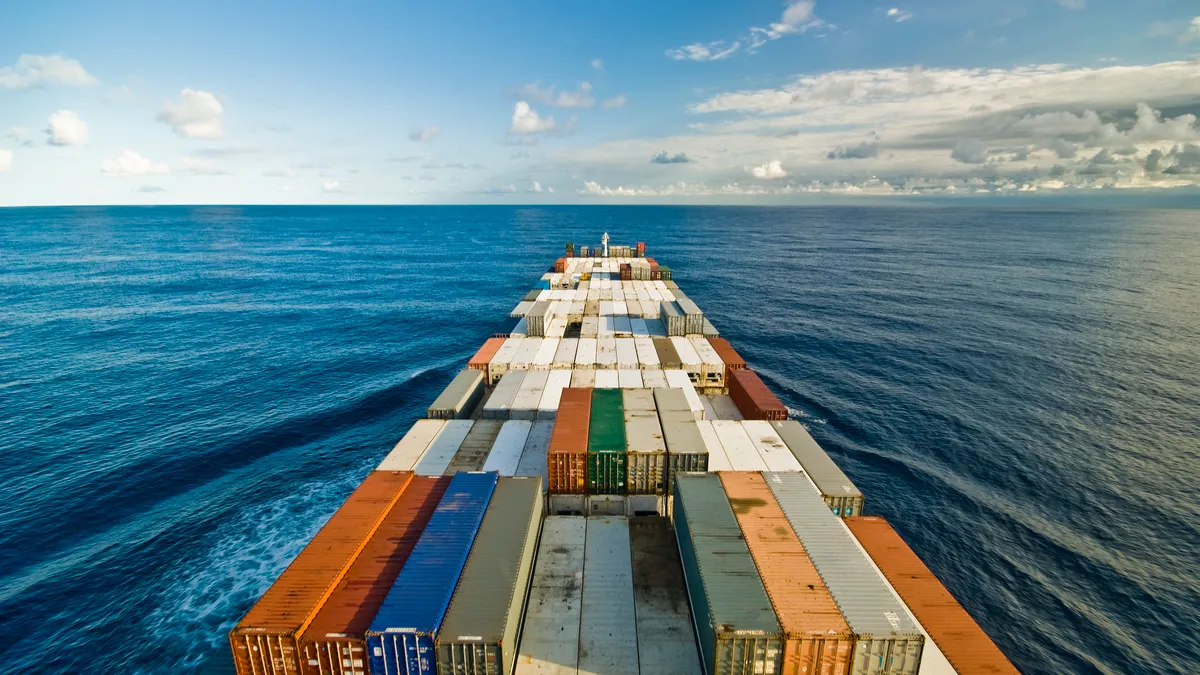LONG BEACH, Calif. — Shipping lines are treading cautiously on capacity as they seek to balance supply and demand in ocean freight and avoid a repeat of industry-wide overcapacity prior to consolidation and the formation of alliances.
During a panel discussion at TPM 2019 in Long Beach, California, Neil Glynn, head of European transport at Credit Suisse, named Maersk Line, CMA CGM, Hapag-Lloyd and COSCO as examples of carriers showing greater discipline in adding capacity to the market.
Hapag-Lloyd canceled three of its eastbound Transpacific services in Q3 of 2018 and has no plans to add new services this year, according to slides presented by Uffe Ostergaard, president of North America for the carrier.
A recent report from The Wall Street Journal portrayed capacity as "increasingly out of step with demand" and said, "the world’s container-shipping lines are stuck with their megaships."
Panelists refuted that premise, noting the ratio of vessels on the order books to ships deployed is at its lowest level in years.
"Look at the numbers," said Philip Damas, director and operational head of Drewry Supply Chain Advisors. "This is not happening."
It wasn't long ago the ocean shipping industry suffered from overcapacity and a supply-demand imbalance, leading to depressed freight rates. With the issues fresh in carriers' minds, they're making deliberate decisions about where and when to add capacity to the market.
Reduced capacity, if coupled with steady or increased demand, could come with the side effect of higher rates for shippers. That could translate to double-digit contract rate increases, according to Drewry.
Hapag-Lloyd expects strong demand on Transpacific routes and stable supply, creating a balanced market in 2019, said Ostergaard, but three factors could throw Hapag-Lloyd's projected supply-demand balance off course.
- Continued impact from tariffs.
- Bottlenecks in infrastructure.
- Potential front-loading ahead of IMO 2020.
The U.S.-China trade war provided a welcome boost to ocean carriers in late 2018, as importers rushed in goods before tariffs took effect or increased. The rush is cooling off, but it could spike again if tariffs on $200 billion worth of imports from China rise from the current level of 10% to 25%.
Hapag-Lloyd floated the possibility of another round of front-loading, although not from tariffs — rather, ahead of IMO 2020, when low-sulfur fuel regulations take effect next January.
Carriers will attempt to recuperate some of the costs from shippers via bunker adjustment factors or surcharges. Many BAFs were implemented earlier this year, although it's possible the charges will further rise once IMO 2020 is in effect.
As a result, shippers may import more goods before fuel prices further drive up costs. Drewry estimates medium-sized shippers would be exposed to more than $1 million from IMO cost impact in 2020.
Carriers have intensified ship scrapping in order to comply with the upcoming IMO 2020 regulations, further reducing capacity. Damas said 450,000 TEUs could be scrapped in 2019, with an additional 500,000 TEUs sent to the scrapyard in 2020.














